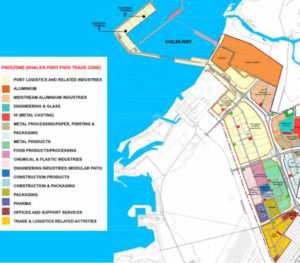Responding to the rising demand from both foreign direct and existing investors, Abu Dhabi Ports have revealed expansion plans for the largest Free Trade Zone in the region.

Khalifa Port Free Trade Zone (KPFTZ), a 100 sq km free zone area (across Areas A and B of KIZAD), is fully integrated with the region’s first semi-automated port, which has already attracted wide portfolio of investment sectors to KIZAD including aluminium, automotive, engineered metals, port logistics, food processing, pharmaceuticals, packaging, polymer converting and other industries, that rely on their proximity to Khalifa Port. The new Free Trade Zone offers a flexible master plan that is capable of accommodating more industries in the future from a land use perspective. Within the additional free zone territory allocated in the 16 sq km Area »A« of KIZAD will be a new Business Park.
The Khalifa Port Free Trade Zone, located adjacent to Khalifa Port – the second fastest growing port in the world, according to Abu Dhabi Ports – »is poised to become the future of trade in the emirate of Abu Dhabi, adding significant value to investors, while strengthening Abu Dhabi’s position as a thriving maritime hub in the Middle East, Africa, and South Asia (MEASA) region«, the company said in a statement.

Approximately 40 companies currently operate in the Khalifa Port Free Trade Zone with a mixture of activities including industrial, trading and service orientations. The primary focus of business activities is on trading, Logistics, Packaging, Food & Beverage, Aluminum, light, medium and heavy industries. Khalifa Port FTZ provides advantages such as competitive lease prices and low utility under a tax-free umbrella.
Spanning a total area of 84 square meters, Area B will feature heavy, light and logistics industries, commercial complexes, big-box retail stores, a town centre and mixed-use developments, as well as residential developments.
According to the port company, the location offers importers and exporters reach to more than 4.5 billion consumers. In addition, the free trade zone’s multimodal connectivity to roads, ports, air and future rail networks ensures easy accessibility to all of the region’s key logistics and trading destinations.
















